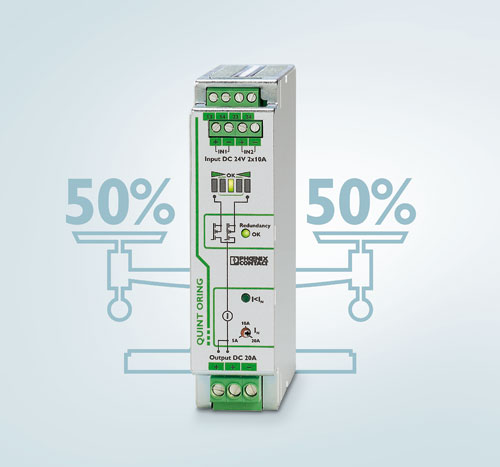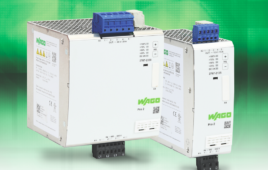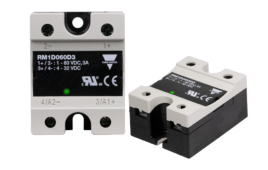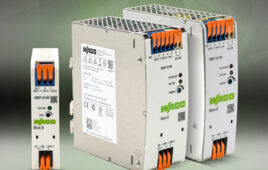Phoenix Contact’s Quint O-Ring active redundancy modules use new auto current balancing (ACB) technology for precise load sharing. The ACB technology, coupled with load current monitoring, remote diagnostics and visual indications, ensures maximum reliability in redundant power systems.
ACB technology automatically and symmetrically distributes the load current without regard to effects such as temperature drift. With a balanced current draw, lifetime expectancy of each power supply may double. The Quint O-Ring module’s display shows the status of the load sharing. If the module nears a critical state, it will generate an alarm.
In addition to the ACB, the Quint O-Ring module can monitor the load current. If a load powered by redundant power supplies draws more current than a single power supply can provide, this essentially defeats the redundancy. At this point the Quint O-Ring will send an alarm to the control system. Typically this functionality would require an additional current monitoring product.
The Quint O-Ring can also diagnose itself. If the internal redundancy is defeated, the module generates an alarm to the control system.
Quint O-Ring technology uses MOSFETs for decoupling instead of the typical Schottky or silicon diode. This saves up to 70 percent more energy than traditional modules and reduces heat in a control cabinet.
The Quint O-Ring is available in two 24 V DC versions. The 32-mm-wide module accepts up to two 5-or 10-amp inputs. A 38-mm-wide version accepts up to two 10- or 20-amp inputs. Both are approved for use in Class I, Div. 2 hazardous locations.
Phoenix Contact
www.phoenixcontact.com
Filed Under: ELECTRONICS • ELECTRICAL






Tell Us What You Think!